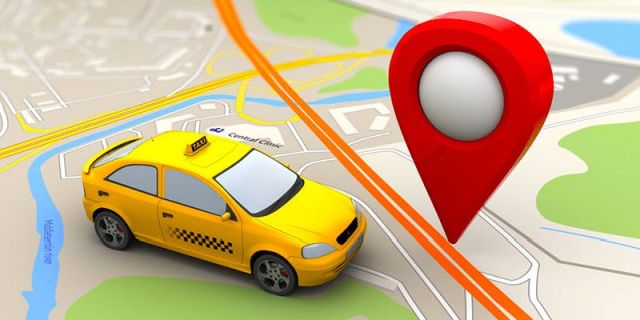
by Editor | May 25, 2021 | Markets, Social Media, Technology
 New Delhi : Google on Thursday rolled out Hindi support for its virtual assistant Google. The Assistant in Hindi will be available on Android phones 6.0+ (Marshmallow and above) and will soon come to Android 5.0 Lollipop, iPhones as well as Android Oreo (Go edition) devices.
New Delhi : Google on Thursday rolled out Hindi support for its virtual assistant Google. The Assistant in Hindi will be available on Android phones 6.0+ (Marshmallow and above) and will soon come to Android 5.0 Lollipop, iPhones as well as Android Oreo (Go edition) devices.
Google Assistant is already available in Hindi in the instant-messaging platform Allo and in a special version on Reliance Jio feature phones.
“In order to make it even more useful to Indians over time, developers and businesses can now build Actions for the Hindi Assistant through the developer platform Actions on Google,” said Purvi Shah, Technical Programme Manager, Assistant.
“Once an action is built, you can just say “Ok Google, talk to” and access the service or content straight through your Google Assistant,” she added.
To try it out, just touch and hold the Home button or say “Ok Google” on eligible smartphones and your personal Google Assistant will be ready to help.
To access the Hindi Google Assistant, set your device language to Hindi and update your Google Search app to the latest version.
Google Assistant will be available in more than 30 languages by the end of this year.
“The Assistant is already available in eight languages, and by the end of the year it will be available in more than 30 languages, reaching 95 per cent of all eligible Android phones worldwide,” Nick Fox, Vice President of Product, Google wrote in a recent blog post.
—IANS

by Editor | May 25, 2021 | Markets, Networking, Social Media, Technology
 New Delhi : In a bid to make it easy for users to find addresses and navigate, Google India on Tuesday announced a slew of updates and features on Maps, including “Voice Navigation” in six additional regional languages.
New Delhi : In a bid to make it easy for users to find addresses and navigate, Google India on Tuesday announced a slew of updates and features on Maps, including “Voice Navigation” in six additional regional languages.
According to Google, in India, it can be challenging to reach a given residential address. While some addresses are well defined by street names and house numbers that are easy to find, others can be long-winded and hard to locate.
“Millions of people and places in India are hard to locate — especially those in remote areas. We are deeply committed to helping find solutions to these challenges,” Suren Ruhela, Director, Google Maps Next Billion Users, told reporters here.
The tech giant introduced “Plus Codes” — an open source solution that represents a simple and consistent addressing system and works not only in India but globally.
The feature zeroes in on an area based on the “Plus Code” which is provided by a user.
The code comprises of a “six-character + city” format that can be generated, shared and searched by anyone.
To use a “Plus Code”, users need to simply enter it into the Search field on Google or Google Maps, mobile or desktop, which will instantly show a location.
“Plus Codes” can be used for a wide variety of reasons, including communicating the venue of a temporary event, guiding emergency services to afflicted locations and providing an identifiable location for complicated addresses.
“Plus Codes” depends on the concept that each place can be divided into grids. It is a free to use feature that even works when a person is offline.
Creating a “Plus Code” of a place is simple and since its an open source solution, third-party apps or developers could also use it to pinpoint the areas that they want to reach.
In another step aimed at facilitating accurate and easy searching on Maps, Google introduced “Add an address” feature that would enable users to submit a missing address and the company would make sure the address is searchable in due course after verification.
“We silently launched the feature a few days ago and found that people are already adding their addresses. This shows that people want their addresses to be searched,” Ruhela noted.
Google advised people not to include personal details or names while adding an address.
“If something like this happens, Google has technology in place to discard the added address making the experience secure,” the company executive said.
The search giant also made it simpler to search long and complicated addresses in India with “Smart Address Search”.
Ruhela said that Google India has been working to use Machine Learning (ML) to improve the “Smart Address Search” result.
If a user is unaware of the exact address and Maps does not understand the address precisely but he or she knows about the nearby landmarks or locality, “Smart Address Search” would use all the pieces of the information provided in the address and user could best identify the area.
Google also added “Voice Navigation” in six more languages: Bengali, Gujarati, Kannada, Telugu, Tamil and Malayalam.
The company had launched voice navigation in Hindi three years ago.
—IANS

by Editor | May 25, 2021 | Markets, Networking, Technology, World
 London : Google has received more than 2.4 million requests to remove URLs from its Search under Europe’s “Right to be Forgotten” laws since they were introduced in May 2014.
London : Google has received more than 2.4 million requests to remove URLs from its Search under Europe’s “Right to be Forgotten” laws since they were introduced in May 2014.
In a landmark ruling, the European Court of Justice established the “right to be forgotten,” or more accurately, the “right to delist”, allowing Europeans to ask search engines to delist information about themselves from search results.
“Since 2014, we’ve provided information about “right to be forgotten” delisting requests in our Transparency Report, including the number of URLs submitted to us, the number of URLs delisted and not delisted, and anonymised examples of some of the requests we have received,” Michee Smith, Product Lead, Google Transparency Report, said in a blog post.
In deciding what to delist, search engines like Google must consider if the information in question is “inaccurate, inadequate, irrelevant or excessive” — and whether there is a public interest in the information remaining available in search results.
“We’re expanding the scope of our transparency reporting about the “right to be forgotten” and adding new data going back to January 2016 when our reviewers started manually annotating each URL submitted to us with additional information,” Smith added.
About a third of the removal requests were related to social media and directory services, while around 21 per cent were URLs related to news outlets and government websites that mostly covered someone’s legal history, The Verge reported on Wednesday.
According to Google, it shows a breakdown of the requests made by private individuals vs. non-private individuals — like government officials or corporate entities.
“We classify the content that the individual has asked us to delist into a set of categories: personal information, professional information, crime, and name not found, meaning that we were not able to find the individual’s name on the page,” Smith further said.
“When we evaluate a URL for potential delisting, we classify the website that hosts the page as a directory site, news site, social media, or other,” he added.
Google has also released draft of a new research paper called “Three Years of the Right to be Forgotten” which has been submitted for peer review.
—IANS

by Editor | May 25, 2021 | Business Summit, Events, Markets, Technology
 Panaji : With an aim to creating a pool of highly-skilled workforce in the country, Google on Friday announced a three-day ‘Developer Students Club’ (DSC) summit in Goa.
Panaji : With an aim to creating a pool of highly-skilled workforce in the country, Google on Friday announced a three-day ‘Developer Students Club’ (DSC) summit in Goa.
The summit — from February 23 to 25 — is aimed at giving the Indian student community a head-start on Machine Learning (ML), Artificial Intelligence (AI) and Mobile and Web Development technologies.
“To broaden access to world-class technology curricula for students, we are delighted to launch the ‘Developer Students Club’ summit that would make it easy for students and developers to gain the skills they need to be successful in the changing technology landscape,” William Florance, Developer Products Group and Skilling Lead, Google, said in a statement.
The inaugural batch will see 200 student ambassadors from 98 cities across 170 colleges in India attend the three-day event.
The students would learn about various emerging technologies through a series of engaging sessions from experts from Google and industry and hands-on one-to-one mentoring activities.
The summit will also have a ‘Design Thinking’ workshop by university innovation fellows from across the country.
—IANS

by Editor | May 25, 2021 | Markets, Social Media, Technology
 San Francisco : Following Google’s removal of the “view image” button from its image search results last week, several users will move to other browsers like Microsoft’s Bing and Startpage that allow download of high-resolution images with a right click, media reported.
San Francisco : Following Google’s removal of the “view image” button from its image search results last week, several users will move to other browsers like Microsoft’s Bing and Startpage that allow download of high-resolution images with a right click, media reported.
Google, after signing a multi-year global licensing deal with Getty Images, removed the “view image” button — a move set to curb the lifting of copyrighted images from its platform.
According to a BBC report, critics said the changes were “awful”, “user-unfriendly” and “degraded the product”.
“This is a terrible idea… you find an image on Google Images only for the image to be nowhere in sight. Talk about destroying your own successful service,” one user tweeted.
Several users suggested people should try rival image search engines such as Bing which still has a “view image” button.
“Others pointed out that right-clicking an image in Google’s Chrome browser, and clicking ‘open image in new tab’ replicated the missing function,” the report added.
According to lifehacker.com, if you were a frequent user of the feature, you can still get a similar experience through another search engine called Startpage.
“The browser is focused on privacy and provides Google’s search results but with no targeted ads and more privacy,” the report said on Monday.
According to media reports, Google will make copyright attribution and disclaimers more prominent in image search results.
“The change is essentially meant to frustrate users. Google has long been under fire from photographers and publishers who felt that image search allowed people to steal their pictures, and the removal of the view image button is one of many changes being made in response,” said The Verge.
Websites sometimes disable the ability to right click, too, which would make it even harder for someone to grab a photo they’re looking for.
In addition to removing the ‘view image’ button, Google has also removed the ‘search by image’ button that appeared when people opened up an image.
—IANS

 New Delhi : Google on Thursday rolled out Hindi support for its virtual assistant Google. The Assistant in Hindi will be available on Android phones 6.0+ (Marshmallow and above) and will soon come to Android 5.0 Lollipop, iPhones as well as Android Oreo (Go edition) devices.
New Delhi : Google on Thursday rolled out Hindi support for its virtual assistant Google. The Assistant in Hindi will be available on Android phones 6.0+ (Marshmallow and above) and will soon come to Android 5.0 Lollipop, iPhones as well as Android Oreo (Go edition) devices.



